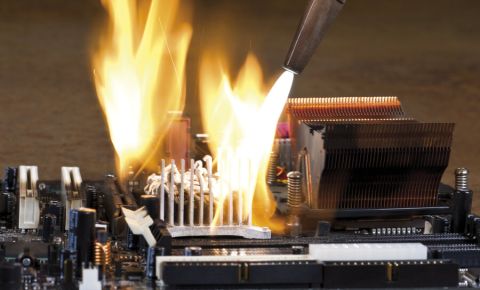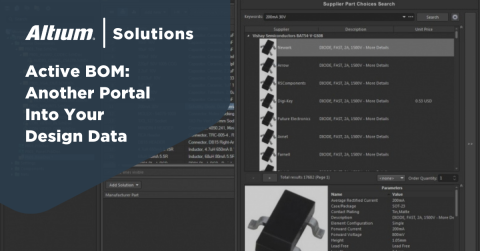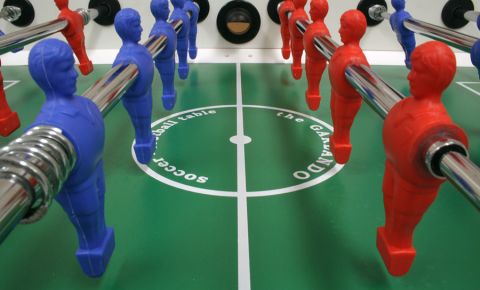The Problem With Using Excel Templates For Your Bill of Materials
Let’s give credit where credit is due: templates can be very useful tools. I’m not really the artistic type, and artistic templates have really helped enhance my documents and presentations. Templates are useful for certain tasks, but using a bill of materials template for a new electronic device is not one of them.
Moving from a finished design to the assembly stage for a new product is no simple task. Your manufacturer needs detailed information on your device before manufacturing and assembly can begin. When you use a premade template for your bill of materials, you’ll find that a significant amount of time is spent manually adding the appropriate information to the document.
Instead of doing all of this manually, your design software should be able to expedite generation of your bill of materials. This saves you time for your first production run, as well as on subsequent production runs. Should you ever need to update or upgrade your device to meet your sourcing constraints, a great piece of design software can synchronize design updates in your bill of materials, saving you a significant amount of time over the long run.
Bills of Materials in Manufacturing
When building any new product and planning for production, you’ll need to compile all the information about your product in a standardized, easy-to-read format. This includes everything from CAD drawings to lists of components and assembly procedures. Planning and budgeting for the manufacturing and assembly phase, if done correctly, can help you get through the entire process with delaying delivery of your product to your customers.
Your deliverables for your manufacturer are critical to ensuring your manufacturer can build your product correctly and minimize wasted production runs. Paramount among your deliverables is your bill of materials. Whether you are working on a new electronic device or some other piece of hardware, your bill of materials will contain a list of all raw materials, sub-assemblies, assemblies, sub-components, and the quantities of each required to manufacture your product.
This isn’t the end of the list of information in your bill of materials. Arguably, the most important set of information is your component sourcing information. Properly sourcing your components and including this information in your BOM helps you accomplish two goals. First, it ensures your device can actually be produced as you have verified your required components can be obtained within your production schedule. Second, it helps you balance your manufacturing budget with your component requirements.
Product development should be maintained with accurate output file structures.
Using An Integrated BOM Tool Over a Template
If you do a quick online search, you’ll find plenty of premade templates for bills of materials that are designed for different types of products. If you’re working with a new piece of hardware and planning for production, you’ll likely find that you don’t need all of these fields, and you may have to add others. Even with a premade template, you’ll still have to modify it to meet your needs.
Most of these templates are in an Excel spreadsheet. While no one is saying that Excel spreadsheets aren’t useful, a premade Excel sheet for a bill of materials will require some modification before it can be used for your next electronic device.
The major problem with using an Excel template for your bill of materials is the time you lose due to lack of synchronization with your design. You’ll have to spend time manually entering your component information and sourcing information in your Excel template. This can take a large amount of time when you need to use a large number of components in your PCB. You’ll have to manually search suppliers for sourcing information and copy it into your bill of materials.
Your design software already contains every piece of data about your device, its components, and how these components are arranged on your PCB. Great design software can take this information and generate your bill of materials automatically, and you can be sure that your fabricator will have all the required information to begin production. If your component library can interface with supplier databases, you can import your sourcing information automatically.
A finished printed circuit board, the goal of our database management.
Integrated Design Software Expedites Design Updates
Great design software does more than just generate a bill of materials based on the components that appear in your PCB. Your fabricator will need CAD drawings of your device, including panelized CAD drawings, Gerber files, and sourcing information for your components. Managing obsolescence using updated sourcing information makes updating your bill of materials quick and easy.
At some point, you may need to upgrade your device by adding new functionality (and components). As existing components become obsolete, you will need to update your device by selecting suitable replacement components. Your new components will have their own sourcing information, and all of this must be synchronized in your bill of materials prior to beginning a new production run.
Integrated design software synchronizes your electronic design with your component libraries and bill of materials tools. Sourcing information also updates periodically, ensuring that you and your fabricator will be able to obtain all the components that breathe life into your device. You won’t have to enter component information into a template manually. This information will synchronize directly from your design, and all within a single software program.
A great piece of PCB design software like Altium Designer makes it easy to take your next electronic device from idea to reality. The component libraries and ActiveBOM tool integrate with your other design tools, allowing you to generate the most accurate layouts, bill of materials, and manage your component sourcing.
To learn more about product management and how Altium Designer can help you manage electronics production, talk to an Altium expert today.










